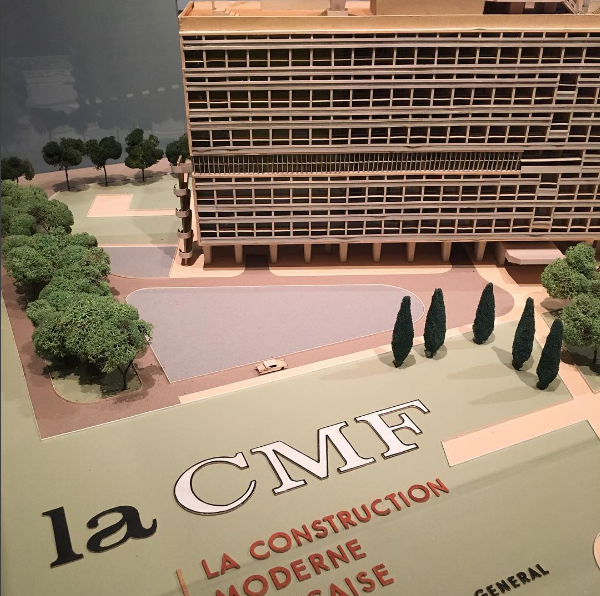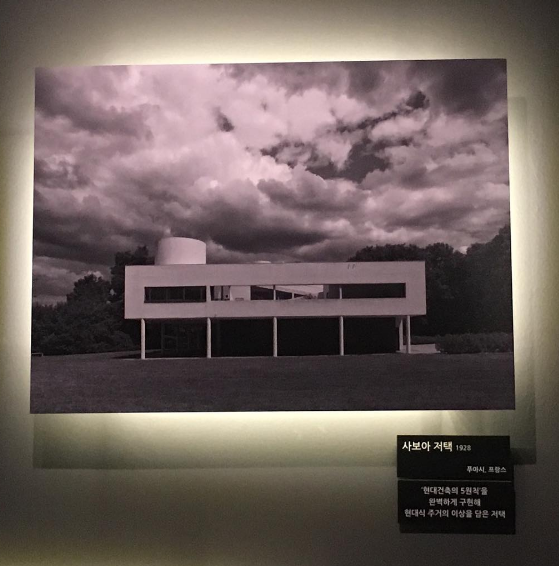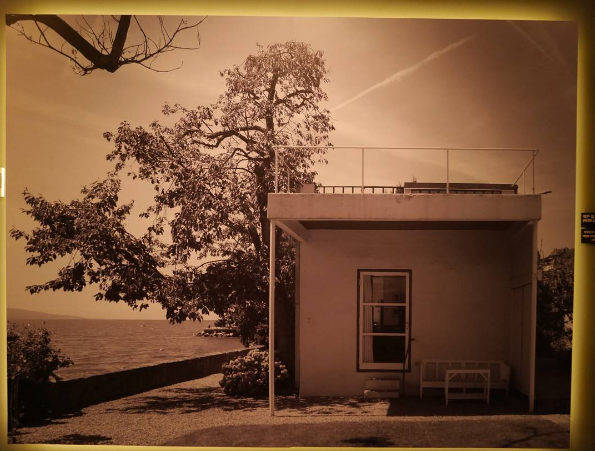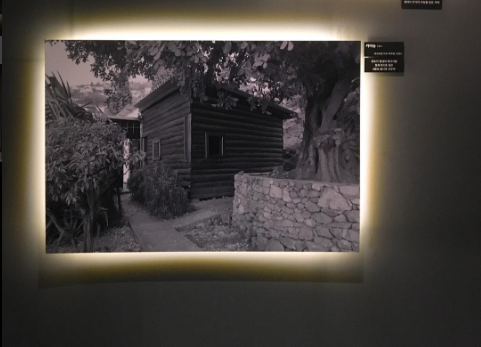Le Corbusier Exhibition
Charles-Édouard Jeanneret, known as Le Corbusier is a Swiss-French modern architect. Seoul Arts Center is presenting his largest exhibition until March 26th, 2017, for the first time in Korea. The exhibition contains his work as architect, designer, painter, urban planner, writer and a photographer. Le Corbusier is a worldwide known architect and remembered in history as the Father of Modern Architecture. Le Corbusier’s sketches and drawings are very relative to his architecture and it is also back into the spotlight from years ago. On July 17, 2016, seventeen projects by Le Corbusier in seven countries were inscribed in the list of UNESCO World Heritage sites as “an Outstanding Contribution to the Modern Movement“.
A few days ago, I visited the special exhibition and went to admire the works of Le Corbusier and had an Interview with Mrs. Kim Keon Hee, who is the CEO of Covana Contents. Covana Contents (founded in 2008) is a cultural and artistic enterprise that produces and invests in various cultural and artistic contents and the company that organized this exhibition. Check out our interview down below with Mrs. Kim.
Hello, Could you introduce yourself to the readers?
I am the representative for Covana Contents, which is a company that seeks to “Wake the spirit through culture”. Covana runs with the motive of stimulating the mind through civilized culture and aims to leave behind a healthy and sound message to society.
Could you tell me what Covana Content, what it does and produces?
We usually relay cultural content to the public through exhibitions, concerts, and publications. Recently our main medium has been exhibitions.
Could you tell the readers about who Le Corbusier is and why you chose his work?
Le Corbusier created the foundation of modern architecture and is one of the forerunners who greatly influenced the living environment of the 20th century. Most of us are still living in buildings that were built on Le Corbusier’s architectural principles. He changed everything after millions had lost their homes due to the two World Wars. In 2016, an unprecedented 17 of Le Corbusier’s concrete buildings were included in the UNESCO World Heritage list. Le Corbusier summarized modernity and established the principles of architecture through countless written excerpts and drawings. Even his unusual looking face became a brand in and of itself—rightfully making him an icon of modern culture.
How did you get inspired to do an exhibition about him?
In 2011 I watched a documentary by Jung Ki-Yong called “The Architect Who Speaks,” and became positive of the fact that an architect does not simply build buildings, but leaves a message through a building. After watching the documentary, I rediscovered the Le Corbusier that I thought I knew. Here was an architect who wanted to convey his thoughts to others and henceforth influenced many architects that came after him. Le Corbusier, the father of modern architecture, wanted to leave behind his thoughts and ideas more than his buildings—that is the man that I wanted to introduce to the public here.
Le Corbusier’s holiday cabin, Cabanon, on the Côte d’Azur in France, was apparently very important to him could you tell me why?
Le Corbusier, being all at once an architect, urban planner, artist, thinker, and a poet, wanted to communicate his personal philosophy through his log house, Cabanon. The small building illustrates simplicity at every corner; just as Corbusier used to emphasize, “At the end of the day, all that matters is the essence”. He designed the log house in 1952 for his wife, Yvonne, and it was built the year after. Le Corbusier would spend the last days of his life in the Cabanon. Built based on Corbusier’s Modulor theory, the house is small, but was designed to present obstacles to daily living. The Modulor theory combines the human form, beauty, and architecture into a single structure and is used to create living conditions that are suited to the typical human. Quite amazingly, out of this small log house came 40 of Le Corbusier’s books and 100 years worth of architectural strategy. Cabanon speaks loudly Corbusier’s mandate loudly, “In here there is no lack and freedom comes as a bonus”. Our exhibition displays a reproduction of Cap Martin in Cabanon and allows visitors to experience first handedly Corbusier’s distinct space philosophy.
Could you tell me what his best works that he has done?
Ronchamp Cathedral and Torrent Convent both show the splendor of light as it passes through the windows of each building. Before Corbusier, religious buildings were built for the deity; for God, but all of Le Corbusier’s buildings were for the humans that would occupy them. He created a space specifically where the atmosphere, humans, and God would come together to create a harmonious unity.
What can the visitors expect from the exhibition?
I think all of us who are part of modern society should see Le Corbusier’s masterpieces. Whether or not we may be directly involved in architecture, the space that we occupy resonates his influence. Thus, if we are to know the environment in which we live, we must learn of Le Corbusier and his principles. We also have much to learn from Corbusier who overcame the poverty of modernity by struggling through loneliness.
What is your favorite piece in the exhibition?
I like Villa Savoye and Ronchamp Cathedral the most. Le Corbusier wanted to build buildings that were based on paintings. For him, the ordinary plane was not just another surface; it was space that could be manipulated to bring life to a painting. You will be able to see this in our exhibition.
Can you tell me where our readers can find your future exhibition events? (Website name?)
I like Villa Savoye and Ronchamp Cathedral the most. Le Corbusier wanted to build buildings that were based on paintings. For him, the ordinary plane was not just another surface, it was space that could be manipulated to bring life to a painting. You will be able to see this in our exhibition.
The exhibition is divided into eight sections and has been organized in the chronological order of Le Corbusier’s life. The exhibition is displaying around 500 works of paintings, sculptures, drawings, sketches and models. The first part of the exhibition, there are photographic displays of the 17 buildings on the Unesco World Heritage List, where visitors can see sketches as well as watercolor drawings on small pieces of paper hanging side by side. This is where most of the 140 never before shown pieces are uncovered. There’s also a section displaying the drawings and paintings he did while on a journey east in 1911. The final section displays 1:1 copy of Le Corbusier’s holiday home in the south of France facing the Mediterranean Sea. Towards the end of the exhibition, Le Corbusier’s easel is on display, allowing visitors to remind themselves of the “painter side of the renowned architect. As well as the visitors can enjoy one of his representative architectures, “The Chapelle of Notre-Dame-du Haut” through a virtual reality video (VR). Le Corbusier inspired many artists, including contemporary art, design and architecture Andao Tadao, which also a section in the exhibition also in Seoul Art Center.
Event Details:
Exhibition Period: Tuesday, December 6, 2016 – Sunday, March 26, 2017.
Hours: 11:00am-19:00pm (March 11:00am-20:00pm).
Venue: Hangaram Design Museum, Seoul Arts Center
Transport: Nambu Bus Terminal Station (Line 3), exit 5, take a shuttle bus
Price: Adult 15,000 won, teenager 10,000 won, child 8,000 won.






























































